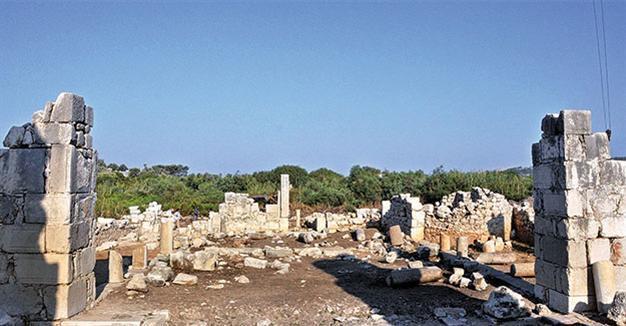Work resumes in Patara’s basilica
ANTALYA – Doğan News Agency

DHA photo
Excavations have recently resumed in the ancient city of Patara, located in the southern province of Antalya’s Kaş district. This year’s work will focus on the excavation and restoration of the largest structure in the ancient city, its basilica.
The capital of the Lycian Union, Patara has been undergoing excavations for 27 years. This year teams from Akdeniz University will work in the field for the next two months. Headed by Prof. Havva İşkan Işık, the excavation teams will also include academics and students from the Munich, Munster, Mainz, Eskişehir Osmangazi, Anadolu and Kocaeli universities.
Besides digging in the basilica, storage work and ceramic drawings of the artifacts unearthed in the ancient city will also continue.
A statuette of the goddess Asteria and a seal owned by Egyptian King Ptolemares and his wife Arsinoe, as well as a Lydian coin dating back to 610-570 B.C. and a figurine from 3,000 B.C., were among the findings that have been unearthed so far in the ancient city.
An important naval base
Patara was a very wealthy city due to trade and was one of the six principal cities of Lycia.
Following its capture by Alexander the Great, the ancient city became an important naval base as well. Many legends exist explaining the origin of the name Patara. During the time of Lycia’s Ptolemy domination, Ptolemaios II (who reigned from 285-246 B.C.) renamed Patara as Arsinoe in honor of his wife. However, the original name was soon again in use.
During the Roman period, Patara was the judicial seat of the Roman governor, and the city became the capital of both the Lycian and Pamphylian provinces.
In Christian history, Patara is famous for being a place of St. Paul’s missionary work at the end of his third missionary journey as he changed ships while en route to Jerusalem. It was also the birthplace of St. Nicholas, the bishop of Myra, whose gift-giving later gave rise to the model of Santa Claus.
Some significant structures in Patara include the Tepecik Acropolis and Necropolis, the Harbor Bath, the Vespasian Bath, the Central Bath, the Amphitheater and the Bouleuterion.
